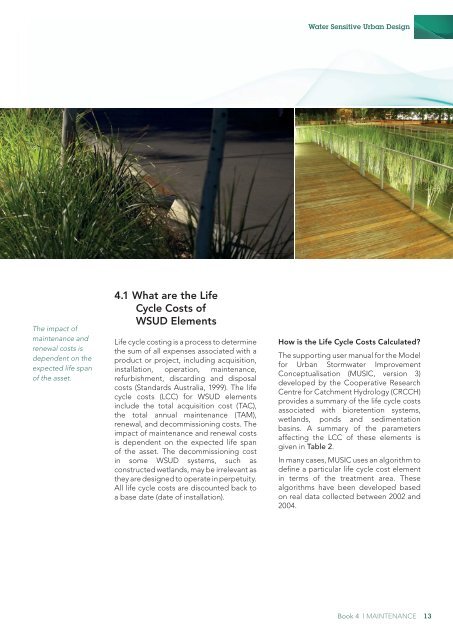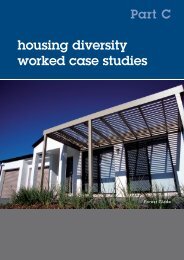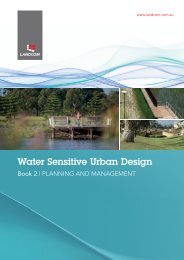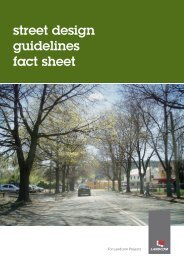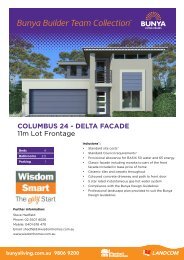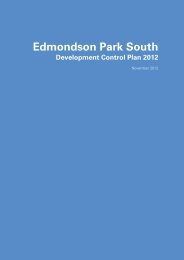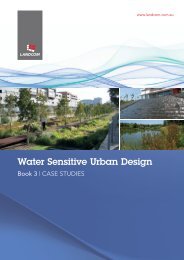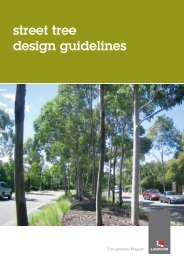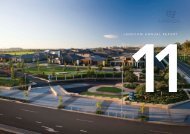Landcom Book 4 Maintenance - WSUD
Landcom Book 4 Maintenance - WSUD
Landcom Book 4 Maintenance - WSUD
You also want an ePaper? Increase the reach of your titles
YUMPU automatically turns print PDFs into web optimized ePapers that Google loves.
Water Sensitive Urban Design<br />
The impact of<br />
maintenance and<br />
renewal costs is<br />
dependent on the<br />
expected life span<br />
of the asset.<br />
4.1 What are the Life<br />
Cycle Costs of<br />
<strong>WSUD</strong> Elements<br />
Life cycle costing is a process to determine<br />
the sum of all expenses associated with a<br />
product or project, including acquisition,<br />
installation, operation, maintenance,<br />
refurbishment, discarding and disposal<br />
costs (Standards Australia, 1999). The life<br />
cycle costs (LCC) for <strong>WSUD</strong> elements<br />
include the total acquisition cost (TAC),<br />
the total annual maintenance (TAM),<br />
renewal, and decommissioning costs. The<br />
impact of maintenance and renewal costs<br />
is dependent on the expected life span<br />
of the asset. The decommissioning cost<br />
in some <strong>WSUD</strong> systems, such as<br />
constructed wetlands, may be irrelevant as<br />
they are designed to operate in perpetuity.<br />
All life cycle costs are discounted back to<br />
a base date (date of installation).<br />
How is the Life Cycle Costs Calculated?<br />
The supporting user manual for the Model<br />
for Urban Stormwater Improvement<br />
Conceptualisation (MUSIC, version 3)<br />
developed by the Cooperative Research<br />
Centre for Catchment Hydrology (CRCCH)<br />
provides a summary of the life cycle costs<br />
associated with bioretention systems,<br />
wetlands, ponds and sedimentation<br />
basins. A summary of the parameters<br />
affecting the LCC of these elements is<br />
given in Table 2.<br />
In many cases, MUSIC uses an algorithm to<br />
define a particular life cycle cost element<br />
in terms of the treatment area. These<br />
algorithms have been developed based<br />
on real data collected between 2002 and<br />
2004.<br />
<strong>Book</strong> 4 | MAINTENANCE 13


